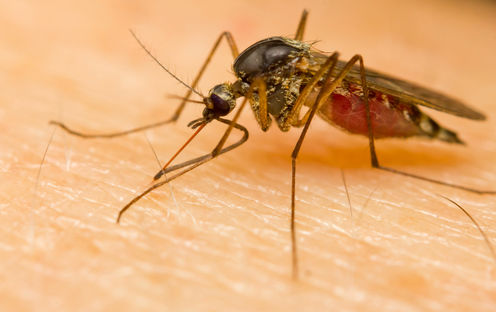
High tides and heavy rain in Southern Queensland have created the perfect breeding ground for mosquitoes that can infect humans with Ross River virus. More than 1,000 cases have been reported to Queensland health authorities so far this year.
Ross River virus got its name because it was first isolated from mosquitoes collected near Ross River in Townsville, north Queensland, in the late 1950s. The name of the disease it causes, epidemic polyarthritis, was coined almost half a century before the cause was identified.
Since then, Ross River virus has been found in more than 20 different species of mosquitoes from all round Australia. Rates of the virus generally increase the further north you go in Australia and are highest in adults aged 25 to 45 years.
About one in five people infected with Ross River virus develop symptoms, which start two to 19 days after being bitten. Children usually develop a mild, short term, fever and malaise. Adults develop arthritis in the small joints of the hands and feet that usually lasts 30 to 40 weeks. About 30% of adults also develop a short-term fever and/or rash.

Patients also may develop a range of other non-specific signs and symptoms such as headache, pins and needles, loss of appetite and nausea, but everyone who is infected will eventually recover. There have been no confirmed reports of anyone getting a second infection resulting in disease.
After the identification of Ross River virus, it was possible to develop simple reliable tests to diagnose epidemic polyarthritis that could be performed in any pathology laboratory. This led to a dramatic increase in the number of patients diagnosed. Since epidemic polyarthritis became a notifiable disease in 1990, Australia has recorded around 5,000 cases a year.
The direct medical costs of Ross River virus are estimated to be around A$20 million each year. There is also an unquantified social cost. As the disease most commonly affects adults in child-rearing years, parents with young children in particular struggle to manage domestic tasks while incapacitated with painful arthritis.
Treatment is focused on reducing the pain and discomfort of the arthritis associated with this infection; there is no “cure”. Non-steroidal anti-inflammatory medication, such as aspirin, ibuprofen and naproxen, is most common and provides some relief for most patients.
There is no evidence that mosquito-control measures, such as insecticide sprays to kill mosquitoes and larvae, have any effect on reducing the burden of Ross River virus infection. This should come as no surprise, given the number of different mosquitoes that can act as vectors and their diverse habitats.
Our outdoor lifestyle adds to the challenge of preventing this disease.
What about a vaccine?
In the mid-1980s, my research team and I began developing a vaccine, based on the the observation that no one ever gets a second clinical Ross River virus infection so a single natural infection must be protective.
We developed a “killed” (inactivated) vaccine because this was less likely to have any adverse effects on recipients and would be cheaper to manufacture and to distribute than other types of vaccines. We found the vaccine protected mice against Ross River virus infection.
We then collaborated with Baxter Biosciences in Vienna, who modified this vaccine for trials in humans. Three different batches of vaccine have now been evaluated in phase one, two and three trials and have shown to be safe and to produce an immune response similar to a natural infection.

The vaccine is yet to be licensed, principally for economic reasons. The market for the vaccine is limited to Australia and some neighbouring countries and Australians are notoriously adverse to using a vaccine that is not paid for by the government.
Ideally, the vaccine would be given to teenagers in their final year of high school when mass immunisation is possible and the cost of vaccine delivery reduced. This would protect them into their early adult life when they would be most likely to develop severe arthritis if infected with Ross River virus and were not protected by a vaccine or a natural infection when they were much younger.
Organisations whose employees are exposed to higher-than-usual risk of infection with Ross River virus also might provide the vaccine to protect their workers as part of their health and safety program.
In the meantime, the best way to avoid Ross River virus infection is to protect against mosquito bites by using a repellent when outside or covering up with cool, loose-fitting clothing.
Prof Aaskov has collaborated with Baxter Biosciences in the development of the vaccine. He has received funding for vaccine-related research from The Cattlemen’s Union, the Medical Benefits Fund of Australia, the Kilkeary Foundation and the Cook Estate.
